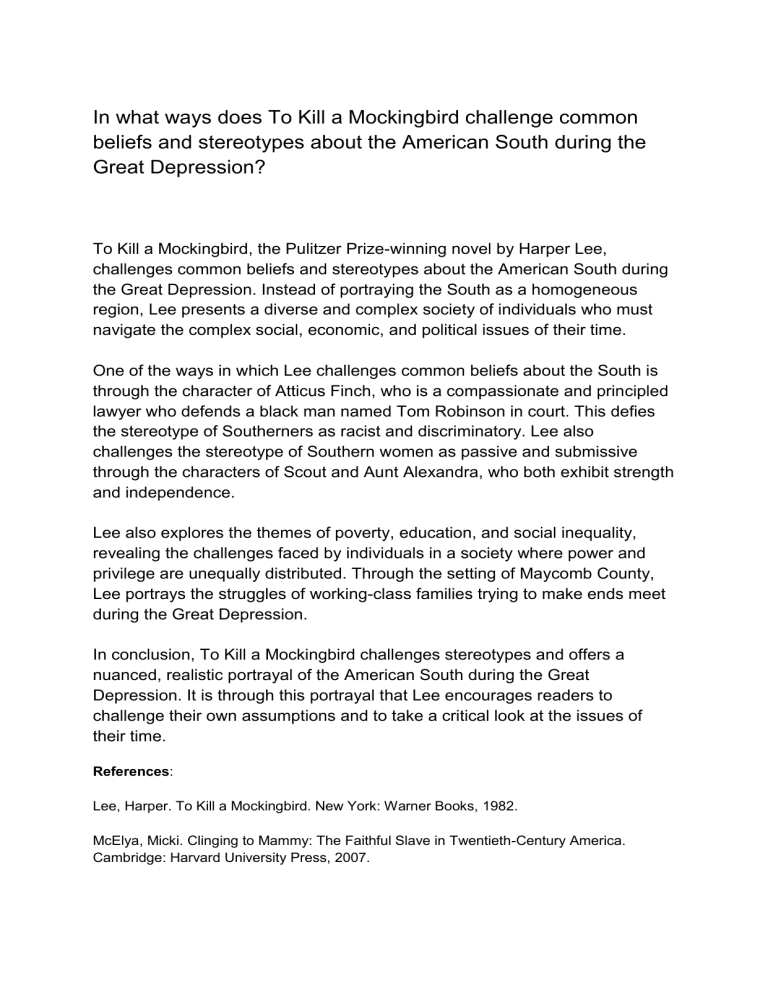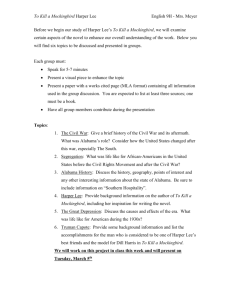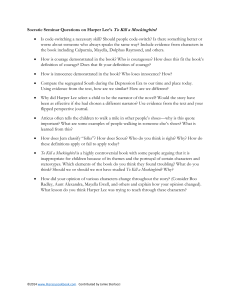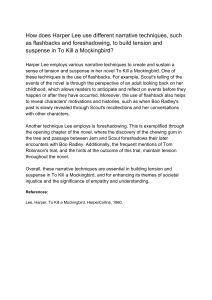In what ways does To Kill a Mockingbird challenge common beliefs and stereotypes about the American South during the Great Depression
advertisement

In what ways does To Kill a Mockingbird challenge common beliefs and stereotypes about the American South during the Great Depression? To Kill a Mockingbird, the Pulitzer Prize-winning novel by Harper Lee, challenges common beliefs and stereotypes about the American South during the Great Depression. Instead of portraying the South as a homogeneous region, Lee presents a diverse and complex society of individuals who must navigate the complex social, economic, and political issues of their time. One of the ways in which Lee challenges common beliefs about the South is through the character of Atticus Finch, who is a compassionate and principled lawyer who defends a black man named Tom Robinson in court. This defies the stereotype of Southerners as racist and discriminatory. Lee also challenges the stereotype of Southern women as passive and submissive through the characters of Scout and Aunt Alexandra, who both exhibit strength and independence. Lee also explores the themes of poverty, education, and social inequality, revealing the challenges faced by individuals in a society where power and privilege are unequally distributed. Through the setting of Maycomb County, Lee portrays the struggles of working-class families trying to make ends meet during the Great Depression. In conclusion, To Kill a Mockingbird challenges stereotypes and offers a nuanced, realistic portrayal of the American South during the Great Depression. It is through this portrayal that Lee encourages readers to challenge their own assumptions and to take a critical look at the issues of their time. References: Lee, Harper. To Kill a Mockingbird. New York: Warner Books, 1982. McElya, Micki. Clinging to Mammy: The Faithful Slave in Twentieth-Century America. Cambridge: Harvard University Press, 2007. Peck, H. Daniel. “The Uses of Southern Stereotypes, Past and Present.” Southern Cultures, vol. 8, no. 2, Summer 2002, pp. 8–29.




